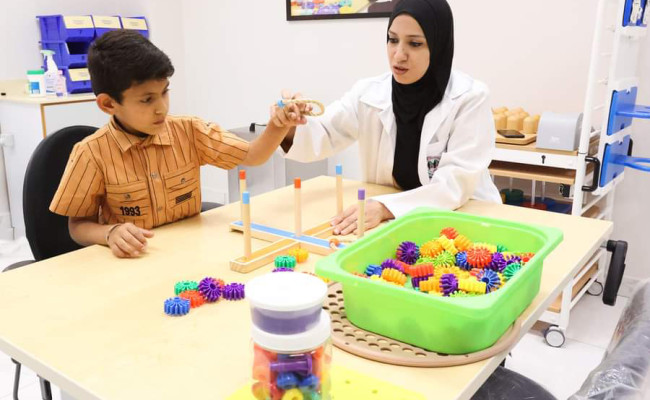The study aims to design a training program using whole-body resistance exercises for football players and to determine its effect on some physical and physiological variables (resting heart rate, maximal oxygen consumption, vital capacity) of the studied football players. The researchers employed an experimental method with a single-group design, utilizing pre-test, post-test, and follow-up measurements to suit the nature of the study. The total population of the research consists of players from the academies of Tubas Sports Club, aged between 18 -20 years, with a total of 25 players. The study sample was purposively selected from the players of Tubas Sports Club football academiesand included 16 players as the main sample and 9 players for exploratory study. In light of the study's objectives and hypotheses, the researchers concluded that the training program using whole-body resistance exercises had a positive effect on some physical capabilities, favoring the post-test measurement. It also positively impacted some physiological variables (resting heart rate, maximal oxygen consumption, vital capacity), favoring the post-test measurement. The mean and standard deviation of restingheart rate were 77.06 bpm and 1.56, respectively, while the mean and standard deviation of maximal oxygen consumption were 62.12 ml/kg/min and 1.41, respectively. The mean and standard deviation of vital capacity were 2.89 liters and 0.096, respectively. The researchers recommend the use of whole-body resistance exercises in training programs for football players in this age group due to its clear impact on certain physical and physiological variables under study. They also advocate for coaches' attention to incorporating whole-body resistance exercises into progressively challenging training regimens to make them more engaging
Main navigation
- Main
-
About AAUP
Image


Give university
For those who wish to donate to the university, you can make your donations by filling out the donation form
-
Admissions & Academics
- Deanship of Admission and Registration
- Programs
- Prospective Student Admission
- Faculties
- Academic Quality
- Bridging to Bachelor's Degree
- Transfer to AAUP
- Visiting student
- Scholarships and Financial Aid
- Mobility and External Scholarships
- Tuition Fees and Costs
- E-Learning
- English Language Placement Test
- Academic Schedule
Image

Arab American University Library
A distinguished library at the local and international levels by providing all electronic and paper information resources.
-
University life
Image


Inspiring success stories from the Arab American University
Success represents the pinnacle of persistence in the face of failure. So, these are the success stories we will share with you that reveal the path taken by some of our university’s graduates.
-
University centers
- Center for Research and Polling
- Climate Change Center
- Conflict Studies Research Center
- Continuing Education Center
- Dental Center
- E-Learning Center
- Hassib Sabbagh Center of Excellence
- Heart Center
- Language Center
- Medical Center - Ramallah
- National Digital Transformation and Artificial Intelligence Center
- Prosthetics and Orthotics Factory
- Simulation Center
Image

Medical Rehabilitation Complex
-
Research
Image


Arab American University Awards
As part of the university’s efforts to support and encourage scientific research, there are a set of awards to encourage researchers to excel in their original and valuable scientific production
-
News & Media
Image


AAUP ACADEMIC CALENDAR
An agenda to show the the important dates such as semester dates, registration, exams, activities, events, and holidays.
